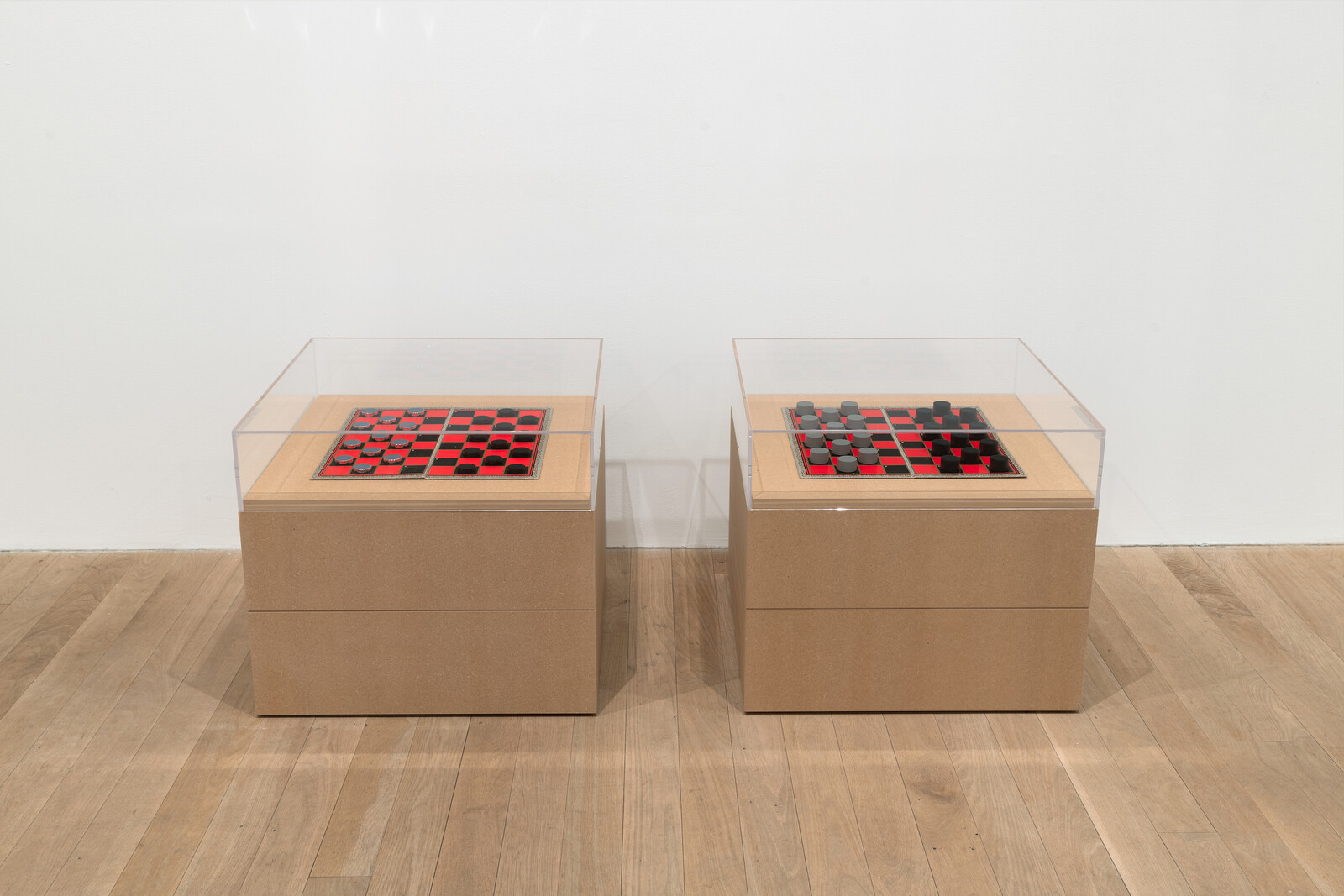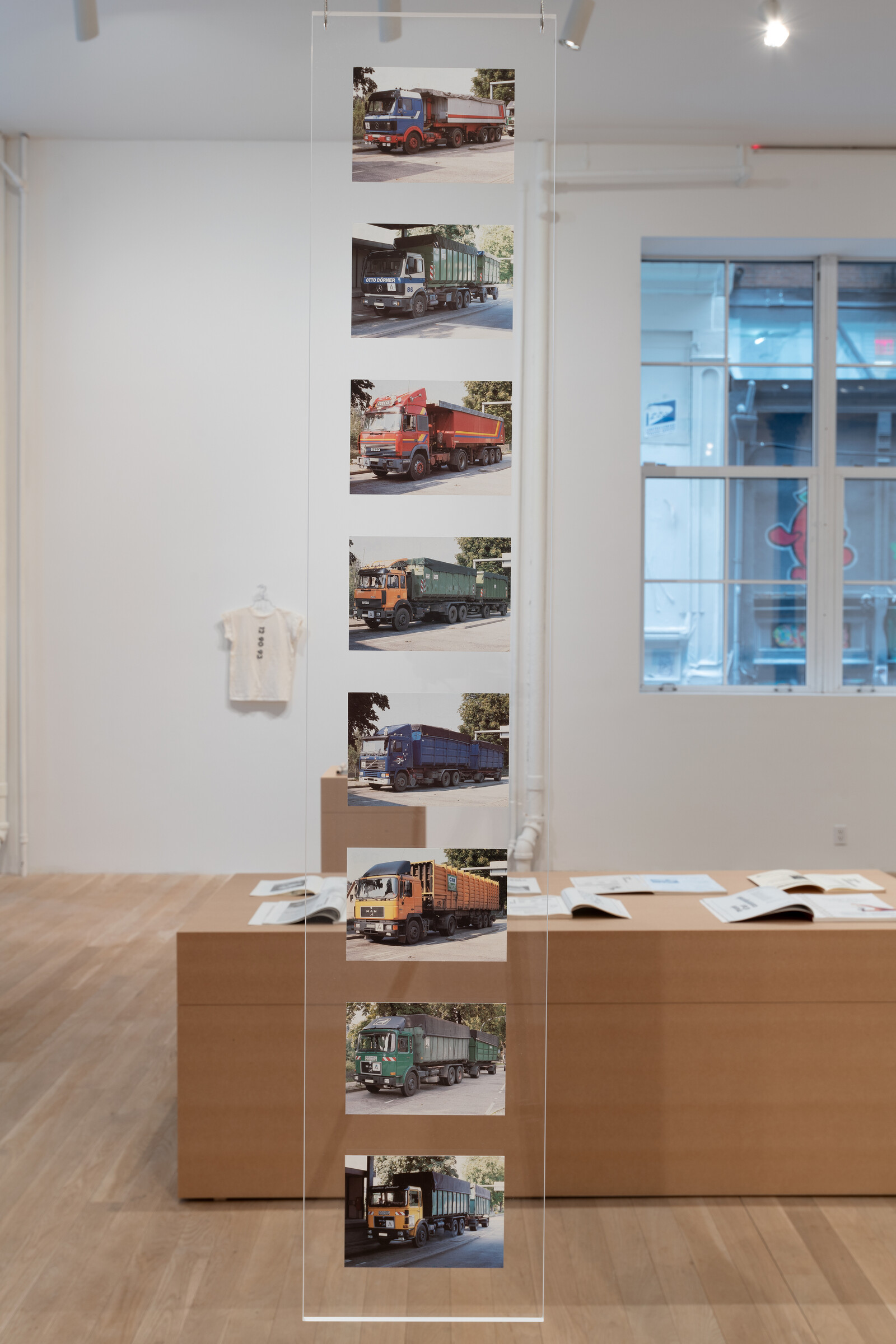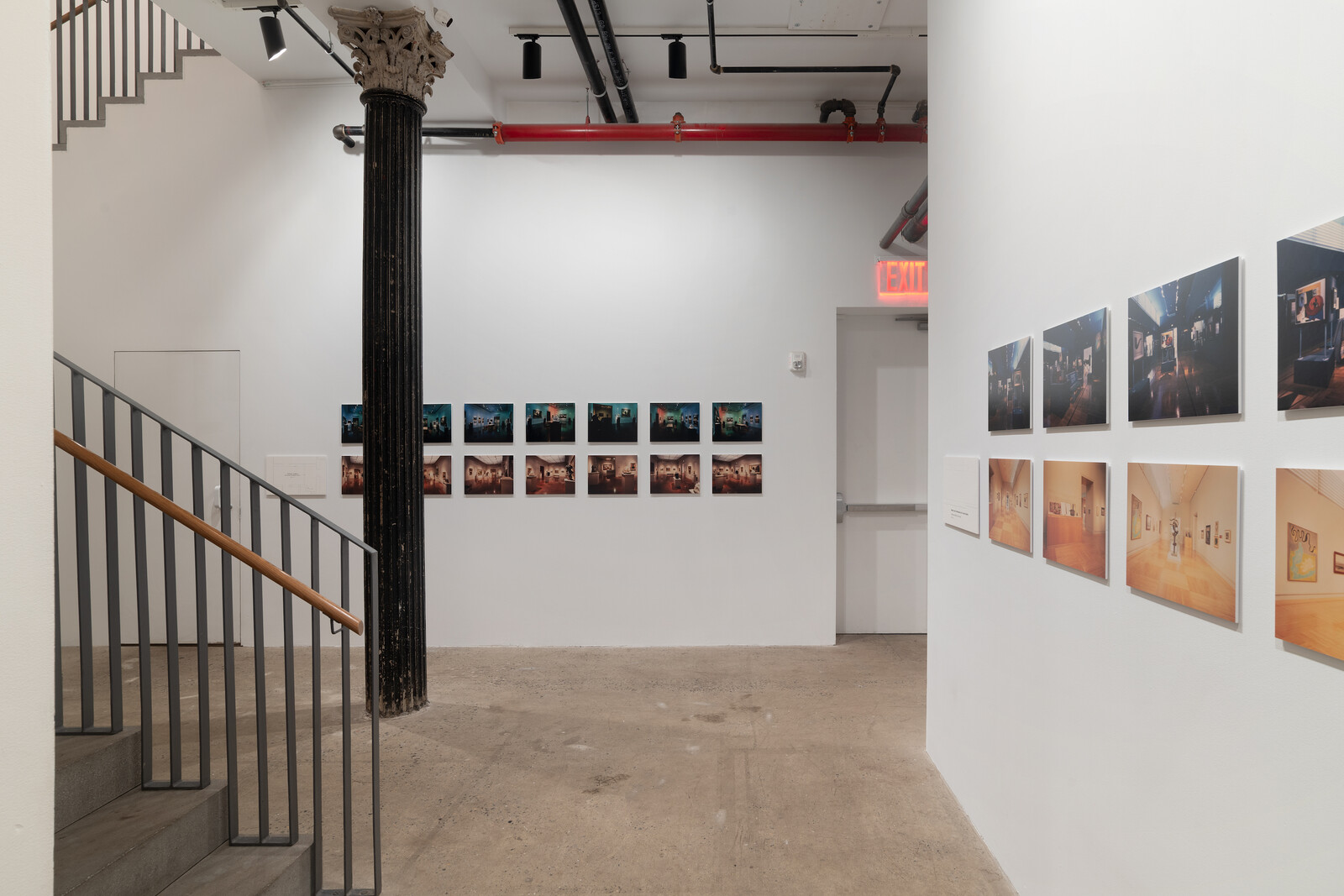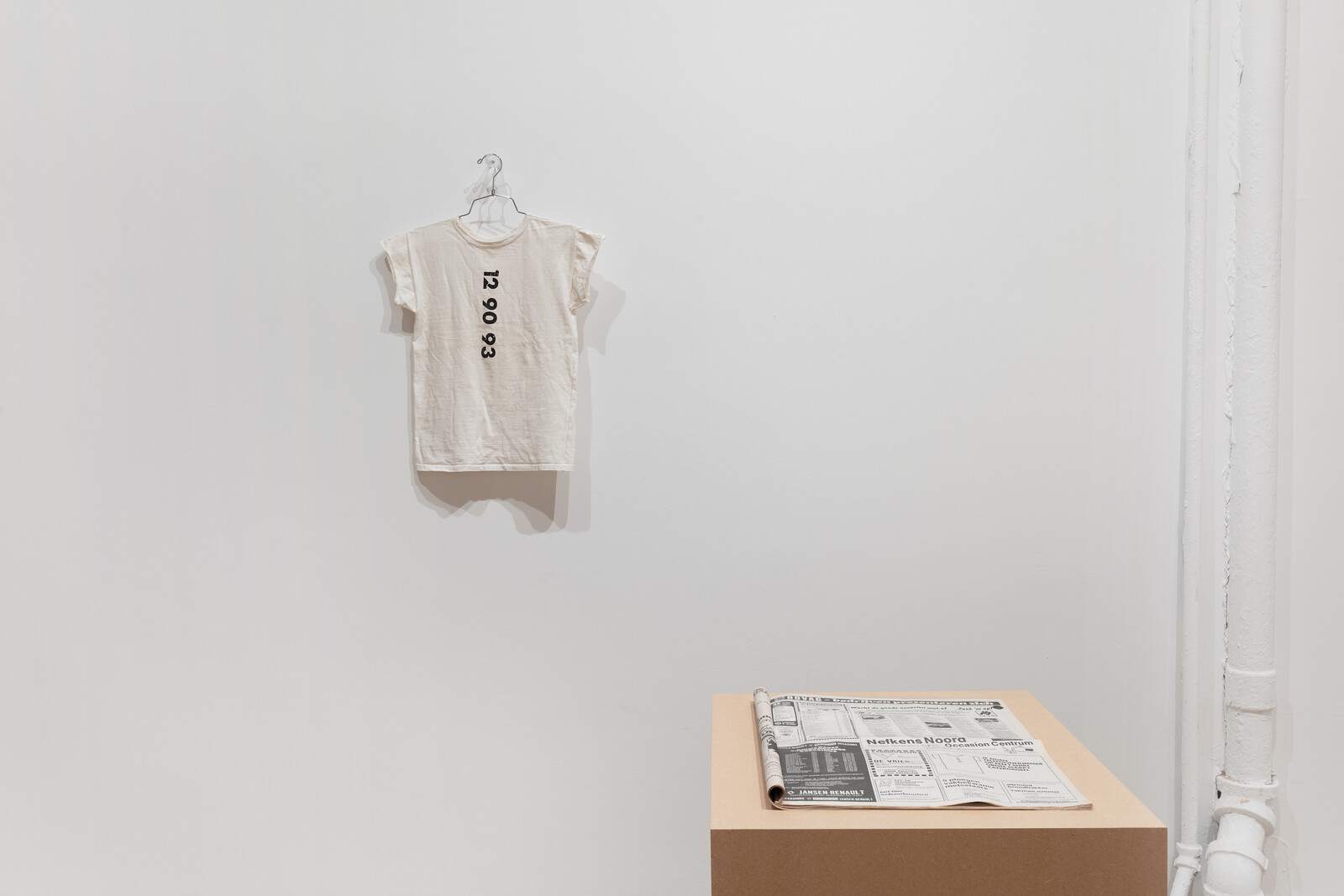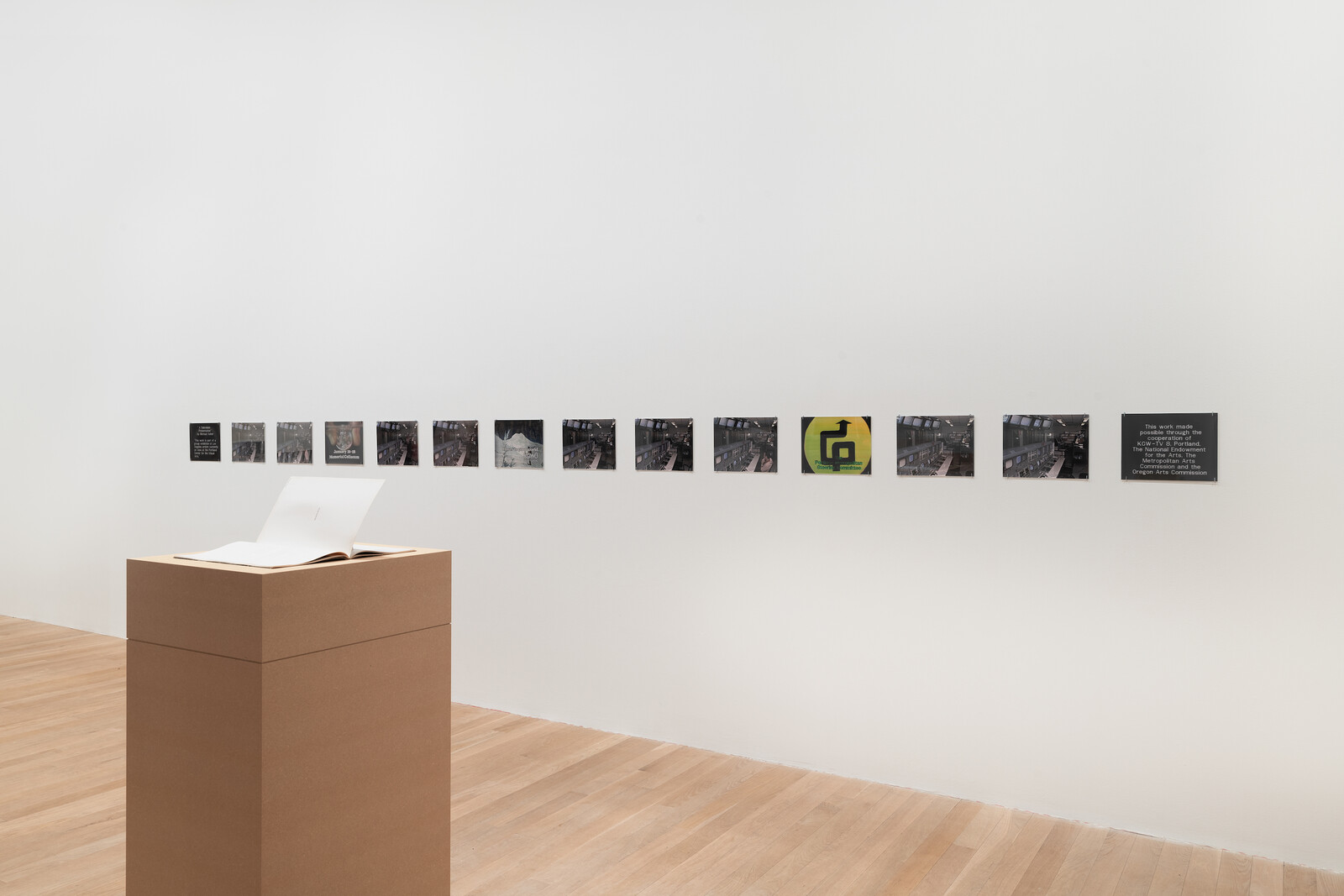Would you pay to have less property? Patrons of Michael Asher did. In 1979, collectors Elyse and Stanley Grinstein commissioned him to make a work for their Brentwood home, adding to a semiprivate showcase that included arrangements of yellow stripes by Daniel Buren and huge redwood logs by Richard Serra. Asher’s untitled piece stipulated that a section of a wall marking the property line be demolished and rebuilt eleven inches inwards, effectively ceding a notch of yard to their neighbors. The work couldn’t be moved or sold.
Asher, who died in 2012, may seem like one of the drier conceptual artists of his generation. His work was usually temporary and survives largely through documents and writing. His most famous pieces involved removing the front wall of a gallery or rebuilding every temporary wall ever installed in a museum. Yet a current survey at Artists Space, despite comprising mostly ephemera including printed matter, notes, and schematics (such as architectural plans for the Grinstein’s modified wall), captures the humor that made Asher so influential.
The Grinstein work, Asher’s only private commission, typifies the artist’s puckish approach to what came to be known as institutional critique. His site-specific interventions were often something of a burden to the museums and galleries that hosted them—his contribution to the 2010 Whitney Biennial stipulated that the museum stay open twenty-four hours for a week. (They could only afford three days.) His medium was the complex currents of ownership, sponsorship, and branding that make art institutions tick.
His piece In Context was another good joke. Between November 1983 and July ’85, an orange sign reading “The Michael Asher Lobby” (on view in the show) greeted visitors to the Temporary Contemporary (now the Geffen Contemporary at MOCA) from a prominent column. Behind the scenes, Asher had licensed the naming rights to the lobby then sublicensed them back to the museum. In case the gesture went over visitors’ heads, cards on the front desk explained the work. MOCA, founded by artists, has always declared itself “The Artist’s Museum”—so why not feature an artist’s name as prominently as those of donors? But to get that kind of perk, like a donor, you had to play nice.
Neither damning nor uncritical, Asher’s work described institutional conditions that many took for granted, or never noticed. He had insider experience. His mother, Betty Asher, was a key collector of Pop Art, as well as a dealer and a curator at LACMA. Rather than rebelling, Asher leveraged his resources of time, money, and access to produce deeply thoughtful excavations of art’s inner workings. This meant exactness. Asher’s foray into experimental film, a fifteen-minute work comprising only middle gray, screened at Artists Space on January 23 for only the third time since 1973. To maintain a scratch-free image, each print is projected just once.
For a 1999 exhibition at the Museum of Modern Art, New York, Asher produced a meticulous “Catalog of Deaccessions 1929 through 1998,” that listed each of the 403 artworks that had left the MoMA collection up to that point.1 Far from fixed, Asher pointed out, art history and the museums that define it are constantly pruned and restored. It would be too easy, though, to read this as a searing exposé—this “flow” allows museums to improve their holdings just as often as it sidelines masterworks.
Some of the systems Asher surfaced were less benign. A set of deadpan postcards produced for an exhibition in Hamburg, Germany in 1989 (on view when the Berlin Wall fell) depicted dump trucks carrying waste, some of it toxic, from West to East Germany. For Asher, even ideological rivals were linked by money and material—something art could reveal, while leaving judgment to its viewers.
Asher extended this scrutiny to his home institution, too: California Institute of the Arts, where he taught the famously durational “Post-Studio” crit class until 2008. A vitrine at Artists Space displays four print ads (or anti-ads) from art magazines that Asher designed for CalArts. One consists of a list of twenty-seven art programs and their websites, in alphabetical order, with CalArts in bold. Another ad overlays CalArts’s website on a junkheap of tires. While evading potential applicants and enhancing the institution’s aura of elitism, the ads also spoke to how art schools are not fantasy lands but parts of cities and systems, a weird and playful world, if you can afford it.
See Roberta Smith, “What’s No Longer On Museum Walls,” The New York Times (31 May 1999), https://www.nytimes.com/1999/05/31/arts/critic-s-notebook-what-s-no-longer-on-museum-walls.html.
